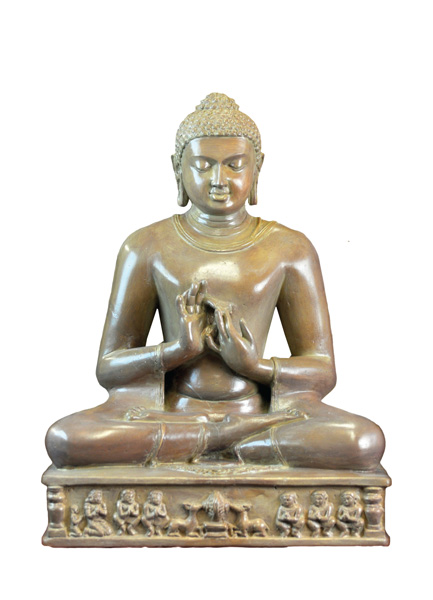RETHINKING THE SATIPAṬṬHĀNA
The seminal Satipaṭṭhāna Sutta is today one of the most studied discourses of the entire Pali canon. It serves to verify, investigate, intuit and internalize Dhamma through through contemplation of direct experience, that we may attain knowledge and vision of the way things are, and it is the historical basis of modern insight or vipassanā meditation. I intend here to show here what is rarely recognized, that the primary Dhamma teaching of concern in the first three of the four themes of satipaṭṭhāna (body, feeling, mind and dhammas) is that pivotal and most challenging teaching: non-self.
Briefly, the first three satipaṭṭānas correspond to three facets of the self as it is presumed to exist as a substantial, fixed thing. Each of the exercises within this scope challenges this presumption by demonstrating that bodily, percipient and mental evidence for the presumption is lacking, primarily through recognition the impermanence of the evidence in contrast with the presumption. It is the distinction between evidence and presumption that gives us the dichotomies referred to in “internal and external” and in “body in body.”
The three facets of the self
We will initially set aside the wide-ranging fourth satipaṭṭāna, each exercise of which takes up a recognized dhamma (Dhamma teaching) for experiential investigation and internalization. The exercises of the first three satipaṭṭhānas are quite different in that they make little or no reference to Dhamma in the exercises themselves, but rely on the common formulaic refrain that is, nonetheless rich in Dhamma. The refrain uniformly conveys the critical teaching of the three characteristics (tilakkhaṇa) of non-self, impermanence and suffering. To get a sense of the logic of the refrain, consider this passage from the Mahānidāna Suta:
Now, Ānanda, one who says: “feeling is my self” should be told: “There are three kinds of feelings, friend: pleasant, painful, and neither pleasant not painful. Which of the three do you consider to be your self?” When a pleasant feeling is felt, no painful or neither pleasant not painful feelings is felt, but only pleasant feelings. When a painful feelings is felt, no pleasant or neither pleasant not painful feeling is felt, but only a painful feeling. And when a neither pleasant not painful feeling is felt, no pleasant or painful feeling.
A pleasant feeling is impermanent, conditioned, dependently arisen, bound to decay, to vanish, to fade away, to cease – and so too is a painful feeling and a neither pleasant not painful feeling. So anyone who, on experiencing a pleasant feeling, thinks, “This is my self,” must, at the cessation of that pleasant feeling think: “My self has gone!” and the same with a painful and a neither pleasant not painful feeling. Thus whoever thinks: “feeling is my self” is contemplating something in this present life that is impermanent, a mixture of happiness and unhappiness, subject to arising and passing away. Therefore it is not fitting to maintain: “feeling is my self.” (DN 15 ii66-7).
We notice that this Mahānidāna passage considers the prospect that feeling is equivalent to the self, and argues that this is unsubstantiated. The teaching of non-self is that we presume the existence of a substantial, fixed self as an abstraction which is unsupported by the evidence, and which furthermore results in suffering. It is just as reasonable to consider that either body or mind is equivalent to the self. This explains the particular themes the first three satipaṭṭhānas: the body, feeling and the mind are three facets of this self that we presume to our detriment.
The Mahānidāna passage then considers the evidence for feeling being this presumed self and finds it wanting, primarily because whatever it is we experience as feeling is always fragmentary, situation-specific, and ever changing, that is, impermanent and lacking the substantial fixedness we presume the self to have. We could argue the same way about the body and the mind.
Now, let’s compare the Mahānidāna passage with the Satipaṭṭhāna refrain:
1. In this way he abides contemplating body in the body internally, or he abides contemplating body in the body externally, or he abides contemplating body in the body both internally and externally.
2. He abides contemplating in body the nature of arising, or he abides contemplating in body the nature of vanishing, or he abides contemplating in body the nature of both arising and vanishing.
3. Recollection that “the body exists” is simply established in him to the extent necessary for bare knowledge and proficiency.1
4. He abides independent. He doesn’t cling to anything in the world.
… That is how a bhikkhu abides contemplating body in the body.
I submit that the logic of the two passages is substantially the same: …

Leave a Reply